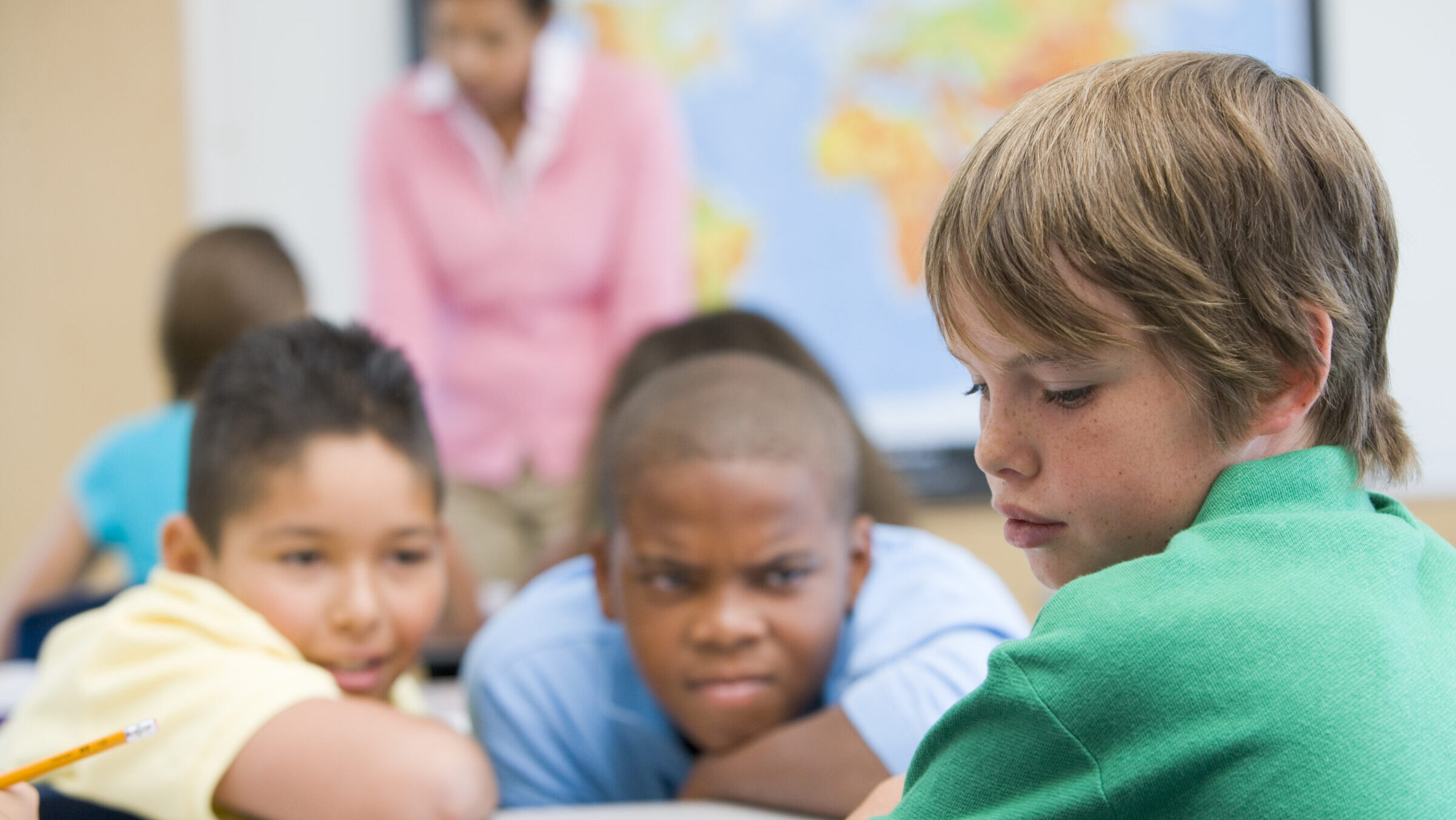Written by: Crystal Williams, Ph.D.
Bullying is a prevailing issue in today’s schools and leads to negative outcomes for both victims of bullying and perpetrators of bullying (Gaffney et al., 2021). Victims are likely to have mental health concerns, lower self-esteem, suicide ideation, and substance abuse issues, while perpetrators are likely to have a criminal record, use drugs, and engage in violent behavior (Gaffney et al., 2021). The short-term and long-term negative effects of bullying make it a high priority for schools to address.
A whole-school approach to anti-bullying is an effective way to reduce both the perpetration and victimization of bullying (Gaffney et al., 2021). Such an approach to anti-bullying incorporates a socio-ecological framework by addressing bullying within the larger context, not just at the individual level (Gaffney et al., 2019; 2021). This means that whole-school anti-bullying initiatives target not just the people involved in bullying, but also the students, teachers, families, school administrators, and community at large.
According to Gaffney et al., (201; 2020), some of the components of effective whole-school anti-bullying programs include family education, teacher involvement, rules and policies, hot spot supervision, curriculum components, peer collaboration, and targeted support for victims. These are described in more detail next.
- Family education– Schools provide information for families about bullying (e.g., prevalence, types, signs) as well as information about the bullying program at the school. This can be done in the form of handouts, videos, newsletters, or informational meetings with families. For example, the KiVa antibullying program includes a parent guide with information and advice about bullying. Importantly, when schools engage families in addressing bullying, they need to refrain from blaming families, which could lead to distrust and disengagement. Instead, they can address issues from a relationship-based and collaborative approach. This may include: talking to families about children’s strengths before addressing concerns, asking families how their children’s behaviors are similar and different from school to home, and asking families what suggestions they have to address concerns at school.
- Teacher involvement- Schools provide training to teachers (and other staff) so that they can prevent, recognize, and respond to bullying. For example, the Olweus Bullying Prevention Program requires one 12-hour training for all staff. Teachers may also be involved in anti-bullying curriculum implementation by teaching lessons about bullying to students (Kärnä et al., 2013; Olweus & Limber, 2010). Teacher attitudes about bullying are essential to creating a safe and positive environment; therefore, it is important for teachers to reflect on the messages they are sending to students about bullying.
- Anti-bullying rules and policies- Rules and policies about bullying may be implemented at the whole-school or classroom level (Olweus & Limber, 2010). These rules and policies help provide a sense of safety for all, accountability to perpetrators of bullying, and consistency in how bullying is addressed. Rules and policies are often reinforced during specific lesson plans taught by teachers and administrators (Kärnä et al., 2013). Importantly, these rules and policies should be carefully crafted with a variety of community partners (e.g., families, local youth organizations) and should not contribute to unjust practices against certain children, such as disproportionate suspension and expulsion rates for some groups of children. To engage community partners in the process, school personnel can host a community listening session to understand what community members want included in the rules and policies or they could invite community members to provide feedback on policy drafts.
- Hot spot supervision– School staff provide increased supervision in locations where bullying is most commonly occurring in the school (Farrington & Ttofi 2009; Olweus & Limber, 2010). These locations might include the lunchroom, out/inside the bathroom and locker rooms, or in the hallways during passing periods. Importantly, this supervision does not need to be provided by an armed police officer, guard, or student resource officer, which can lead to increased distrust of schools and anxiety. Instead, increased supervision can be provided by a variety of school staff who have received training in anti-bullying including teachers, librarians, lunchroom personnel, paraprofessionals, administrators, etc.
- Curriculum components- Age-appropriate lessons are provided to students that address anti-bullying, such as teaching about empathy, self-efficacy, and the bystander effect (Kärnä et al., 2013). These curriculum components can be delivered in a variety of formats, such as classroom discussions, explicit teaching, worksheets, or online modules/videos. For example, the KiVa program provides teaching materials and online games that can be used to teach antibullying content. The method in which they are delivered should also be developmentally appropriate. For example, preschool children should not be expected to complete worksheets.
- Peer collaboration- Peers can be involved in preventing and responding to bullying in a variety of ways (Gaffney et al., 2019). In-class or outside classroom activities that promote peer collaboration might include group discussions about bullying, team-building exercises, or role play/practice opportunities that focus on preventing and responding to bullying as a bystander. Another strategy is to create anti-bullying social media groups or webpages that students help design and moderate (Menesini et al. 2012). This may include a discussion and problem-solving forum for students to share their experiences with bullying while remaining anonymous.
- Targeted support for victims- Students who are identified as victims of bullying are provided additional supports (Olweus & Limber, 2010), such as education about their role in preventing and responding to bullying, information about how to get help, access to mental health services, and increased supervision or parent involvement. This support should be individualized for the student and take into consideration how to avoid further victimizing the student.
All school constituents have a responsibility to help prevent and reduce bullying using a school-wide approach. The strategies listed above can help, but there is no “recipe” or “one-size fits all” method for preventing and reducing bullying. Schools must base their anti-bullying program off the needs of their students, families, staff, and community.
References
Farrington, D. P., & Ttofi, M. M. (2009). School-based programs to reduce bullying and victimization. Campbell Systematic Reviews, 6, 1–148.
Gaffney, H., Farrington, D. P., & Ttofi, M. M. (2019). Examining the effectiveness of school-bullying intervention programs globally: A meta-analysis. International Journal of Bullying Prevention, 1, 14-31.
Gaffney, H., Ttofi, M. M., & Farrington, D. P. (2021). What works in anti-bullying programs? Analysis of effective intervention components. Journal of School Psychology, 85, 37-56.
Kärnä, A., Voeten, M., Little, T. D., Alanen, E., Poskiparta, E., & Salmivalli, C. (2013). Effectiveness of the KiVa anti-bullying program: grades 1–3 and 7–9. Journal of Educational Psychology, 105(2), 535–551.
Menesini, E., Nocentini, A., & Palladino, B. E. (2012). Empowering students against bullying and cyberbullying: evaluation of an Italian peer-led model. International Journal of Conflict and Violence, 6(2), 314–320.
Olweus, D., & Limber, S. (2010). Bullying in school: evaluation and dissemination of the Olweus Bullying Prevention Program. American Journal of Orthopsychiatry, 80(1), 124–134.
Image Credit: Storyblocks.com, CC0













